[ad_1]
I learned nearly as much about the 2023 Rivian R1S electric SUV with a ride in the second row as I did behind the wheel.
On an off-road course outside the racetrack at the New York State’s Monticello Motor Club, with this truck’s ground clearance set to a maximum 15.0 inches, another journalist took the wheel. Rather than following the trail-driving adage “as slow as possible as fast as necessary,” he decided to go as fast as possible and as slow as he had to. Shallow-looking ruts suddenly dropped off, the R1S bottomed out, and all the passengers got hit with a big jolt.
The R1S kept trucking right along, no worse for wear.
Like the Rivian R1T pickup, with which it shares its platform and powertrain, the 2023 Rivian R1S is more than just an electric family hauler. It’s an adventure vehicle that also deals in immense power and plentiful space. The second vehicle from an American EV startup, it’s also a style leader at the forefront of cool in the automotive world.
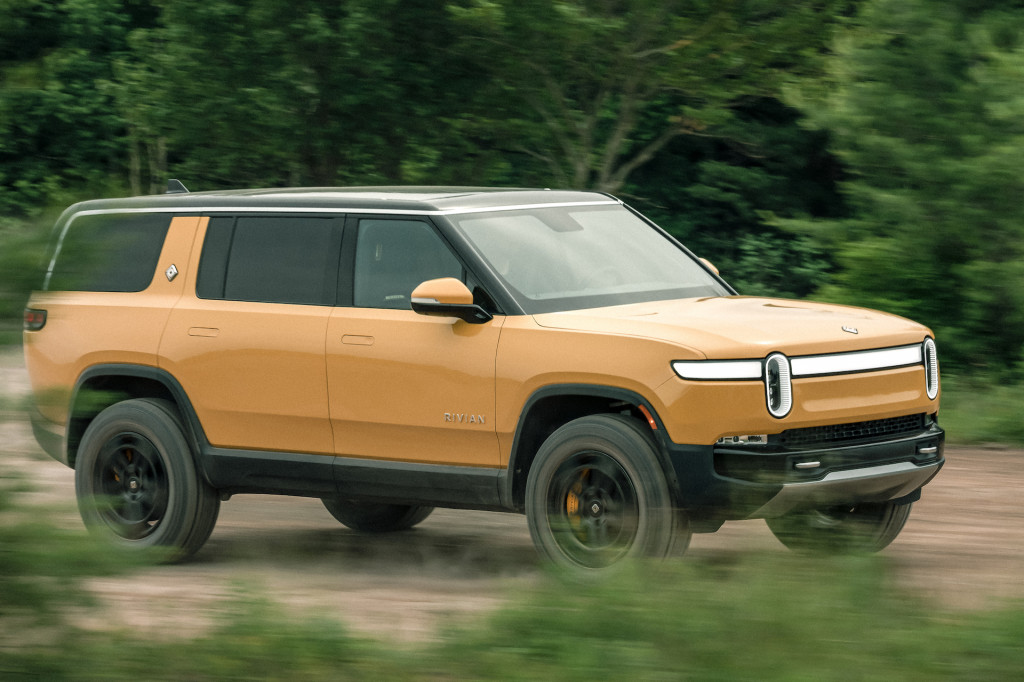
The 2023 Rivian R1S conquers off-road trails as well as or better than any gas-powered SUV.
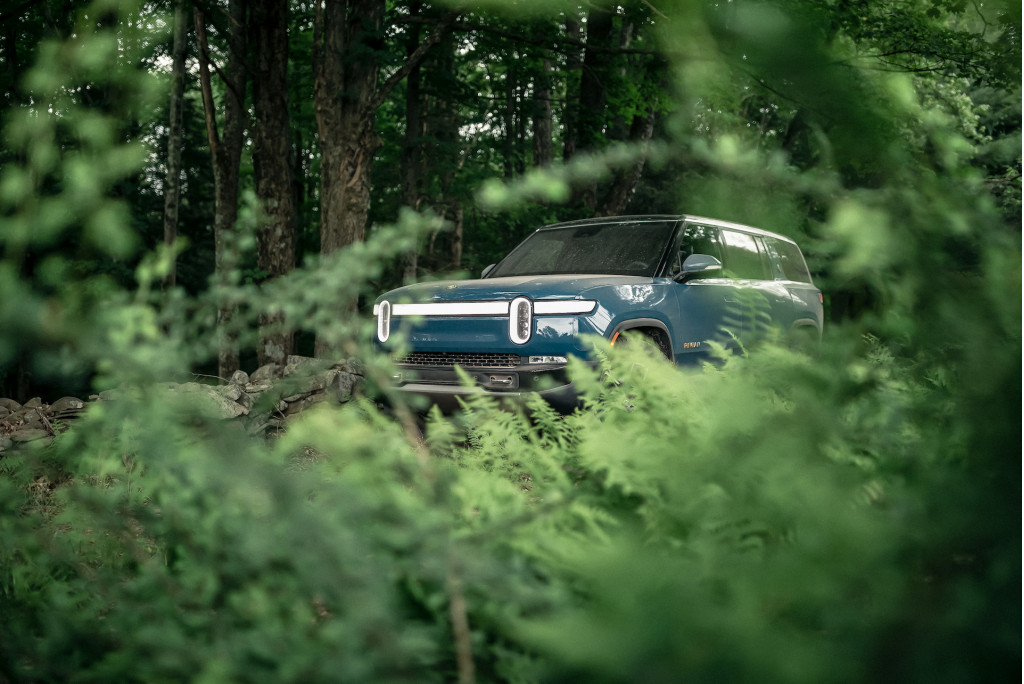
The 2023 Rivian R1S conquers off-road trails as well as or better than any gas-powered SUV.

The 2023 Rivian R1S conquers off-road trails as well as or better than any gas-powered SUV.
Off-road adventurer
The R1S sports the design and equipment to make it a serious off-roader. Like the R1T, it includes an air suspension that sets the ground clearance high at its lowest level and only raises it from there. It’s also outfitted with a double wishbone front suspension, a multi-link rear suspension, and a four-corner hydraulic anti-roll system developed by supercar maker McLaren. Nine drive modes, five of which are subsets of the catch-all Off-Road mode, control the ride height, throttle response, and stability control settings.
After my ride around the course, I got behind the wheel to put those systems to the test. The Rivian engineer in the passenger seat had me choose All-Terrain mode for most of the course, then opt for Rock Crawl for an especially challenging situation (more on that later). Picking an off-road mode automatically sent the ground clearance to 13.1 inches, and then I tapped the 15.6-inch touchscreen to raise the clearance to its maximum of 15.0 inches.
During my run, I also bottomed out the R1S in that deep rut, but I drove slower and didn’t jolt the cabin. The Rivian rep wasn’t concerned either time we hit the bottom because the Adventure model we drove had the optional reinforced underbody panels in what is essentially a flat, smooth design.
The rut might have put other gas-powered off-roaders out of commission. No ICE vehicle has 15 inches of ground clearance, so most would have bottomed out sooner and possibly gotten stuck. That initial sharp hit could have also damaged oil pans, differentials, and mufflers.
The R1S boasts even more off-road prowess than the already capable R1T pickup. It’s 16.3 inches shorter on a wheelbase that’s 14.6 inches shorter, and those measurements improve upon the truck’s off-road angles. A very short nose gives both vehicles an approach angle of an impressive 35.6 degrees, and the R1S’s breakover and departure angles are 34.3 and 29.6 degrees, respectively. The slightly smaller and spiritually similar Jeep Grand Cherokee’s angles are 30.1, 24.0, and 26.6 degrees, respectively, meaning the R1S bests it in every dimension. And that’s for the two-row Grand Cherokee rather than the longer, less capable Grand Cherokee L.
Those angles were on display during a particularly gnarly climb up a short rock face that bordered a stream. The electric powertrain helped here, too, as it did for much of the off-road run. The R1S features a Quad-Motor AWD electric powertrain that makes an immense 835 hp and 908 lb-ft of torque. While the immediate power of electric motors may seem hard to control for delicate off-road scenarios, that’s simply not the case.
Going easy on the throttle, I crawled out of the stream onto the trail ahead. The 275/65R20 Pirelli Scorpion All-Terrain tires provided good grip while wet and muddy, the short front overhang didn’t hit, and the ride height helped the SUV clear the ledge. The R1S’s Rock Crawl mode dulled the throttle response so I could move slowly, and the regenerative braking stopped the momentum when I needed time to pick the proper path using the front camera view, which comes standard (rear, side, and surround views are included as well). The R1S runs in either Standard or High regen settings, which provide either more than 0.2 g or a little over 0.3 g of braking when off the throttle. The throttle and regen tuning allowed me to pick my way, inch by inch, over the tricky terrain.
The #Rivian R1S has more than three feet of water fording capability, and five off-road driving modes to adapt to any terrain or driving conditions. pic.twitter.com/PcA1OFLDAL
— MotorAuthority (@motorauthority) July 6, 2022
The R1S’s angles also cleared steep ascents and descents, while the all-wheel drive enabled by front and rear motors scratched for traction on the climbs. High regen acted like a low-gear crawl mode on the descents—though I also used the mechanical brakes to control those speeds—and the knobby tires worked well on both the muddy trail and slick rocks.

2023 Rivian With 835 hp on tap, the Rivian R1S pushes its 3.5 ton curb weight from 0-60 mph in about three seconds.
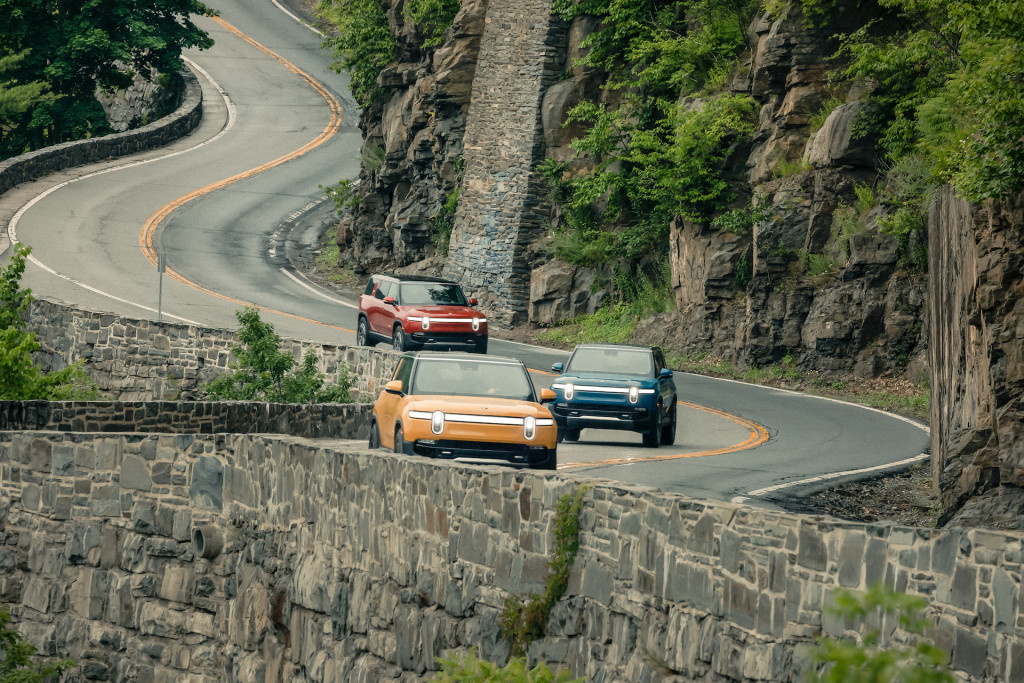
2023 Rivian With 835 hp on tap, the Rivian R1S pushes its 3.5 ton curb weight from 0-60 mph in about three seconds.
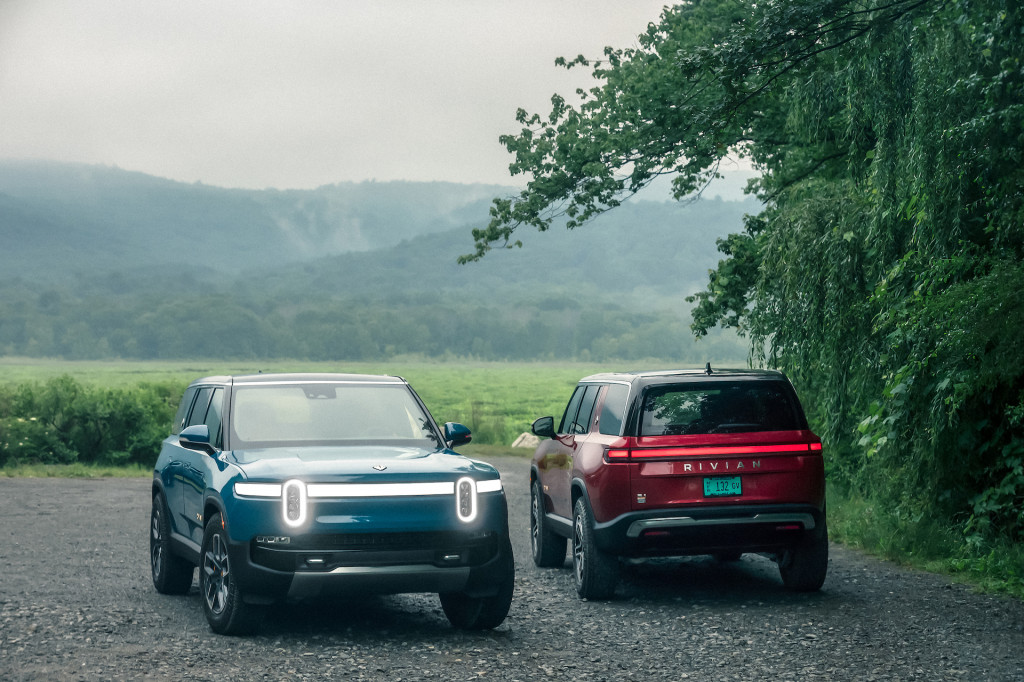
With 835 hp on tap, the Rivian R1S pushes its 3.5 ton curb weight from 0-60 mph in about three seconds.
On-road comfort
A drive to and from Monticello revealed the systems that contribute to the R1S’s off-road capability also help wrangle the SUV’s three-and-a-half ton mass. In its lowest setting of 9.5 inches, the R1S sits about an inch higher than a Jeep Grand Cherokee.
While it rides high at all times, the hydraulic anti-roll system counters lean quite well. It uses hydraulic fluid that flows from one side of the vehicle to the other during cornering to push the suspension down on the outside wheels and therefore flatten the ride.
Still, I preferred Sport mode for its stiffer spring settings and lower ride height. They both limited the slightly choppy feel and side-to-side head shake caused by the 11.5-inch ride height of All-Purpose mode. Conserve mode also worked well on the highway, as it drops the ground clearance to 10.1 inches. Even in Sport mode, though, the R1S was just too tall and heavy for me to want to attack corners on twisty roads with vigor. That would create too much body lean and likely make my passenger carsick.
I’d love to slide through corners on a fast off-road course to get a feel for the Rally and Drift modes, and to feel the effects of torque vectoring enabled by the dual rear motors, but Rivian didn’t provide that opportunity.
No matter the mode, the ride was always comfortable. Even the available 22-inch wheels have tall sidewalls that help cushion the blow of bumps and ruts.
My drive was enhanced by the well-tuned electric power-assist steering and friction brakes. The steering was direct and gave me a good feel of what was going on at the tires, and the brakes had a natural, progressive feel because using the pedal only engages the discs and calipers without the need for a possibly awkward hand-off between regen and friction braking.
The best part of the R1S’s driving character came as no surprise: its electric electric power. Like other EVs, the R1S can leap off the line when pushed, but there’s something more here. With 835 hp on tap, the motors can move more than three tons of SUV from 0-60 mph in about three seconds, and a snap of power is always at the ready whenever it’s time to pass. The system doesn’t offer the visceral aural experience of a force-fed V-8, but its immediate and robust response to throttle inputs is even more visceral.
A 135-kwh Big Pack battery powered the test vehicles I drove as that’s the only pack currently available. A 180-kwh Max Pack will arrive early next year, and a smaller 105-kwh Standard Pack will come sometime thereafter.
With the Big Pack, the R1S is EPA rated for 316 miles of range and carries MPGe ratings of 73 MPGe city, 65 highway, 69 combined. It’s good for 2.04 miles per kwh, which is much less efficient than most of today’s smaller crossover EVs, but far more efficient than the GMC Hummer EV. Your tire choice will affect your range. The EPA ratings hold only for the standard low-rolling resistance tires and 21-inch wheels. Both the 20-inch wheels with off-road tires and the gripper tires on 22s will cut at least 20 miles from the range. The Standard pack is expected to have about 260 miles of range, and Rivian says the Max Pack will extend the range to more than 400 miles.
While it uses a 400-volt architecture, Rivian says the R1S can accept DC fast charging up to 220 kw. On a 240-volt outlet, it can charge at a rate of 16 miles per hour.
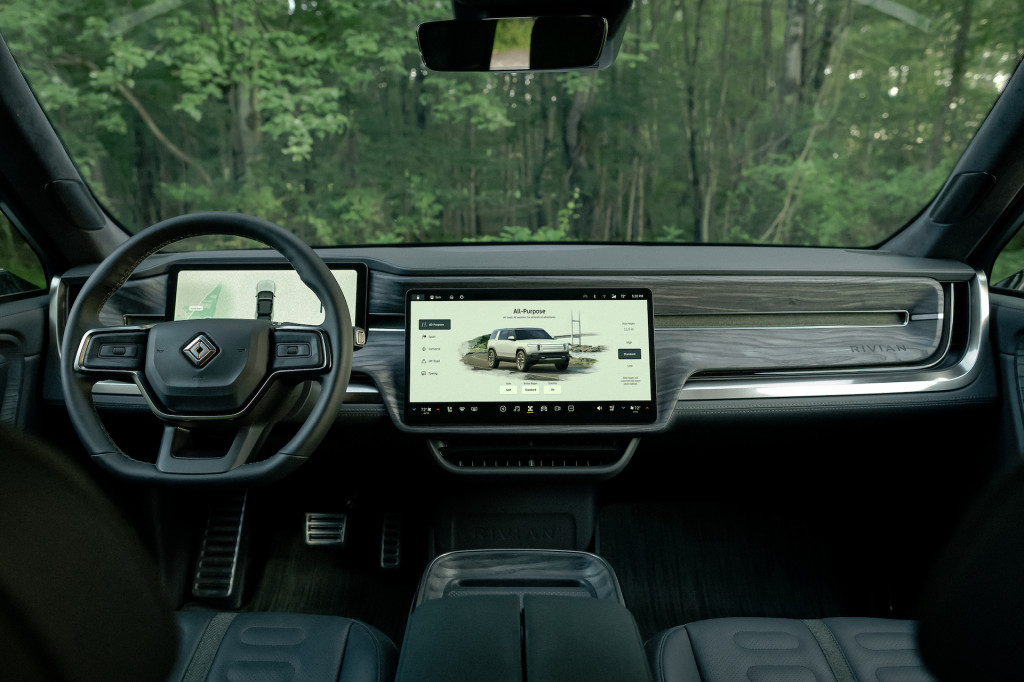
Rivian outfits the R1S’s cabin with sustainable materials, plenty of technology, and some cool extras.
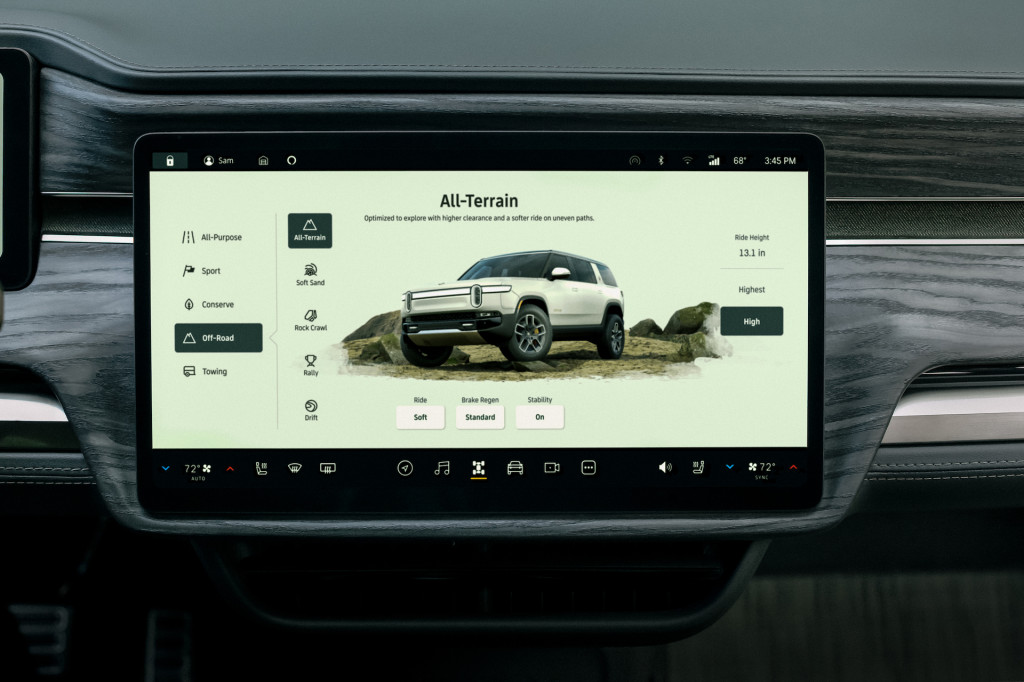
Rivian outfits the R1S’s cabin with sustainable materials, plenty of technology, and some cool extras.
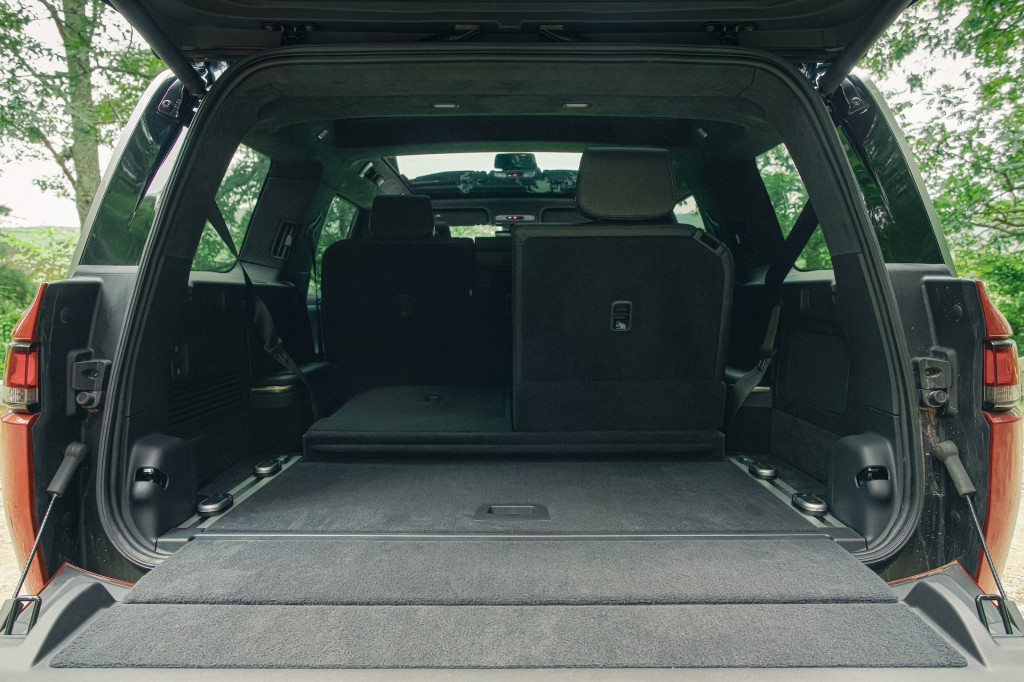
Rivian outfits the R1S’s cabin with sustainable materials, plenty of technology, and some cool extras.
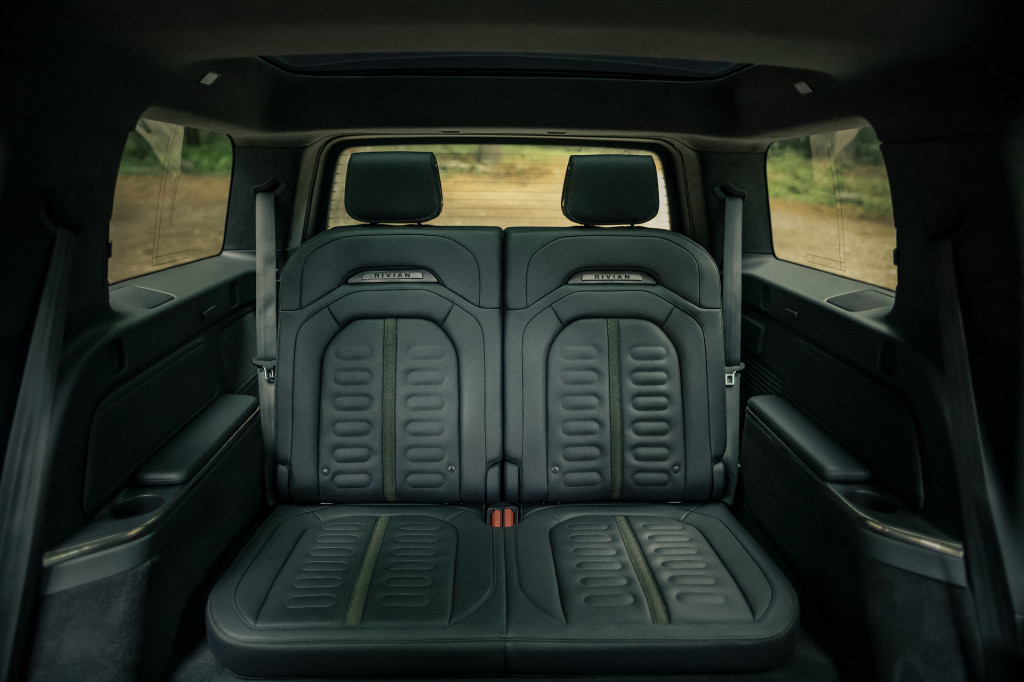
Rivian outfits the R1S’s cabin with sustainable materials, plenty of technology, and some cool extras.
Spacious, utilitarian cabin
The R1S’s cabin sports a new take on luxury, one that mixes sustainable materials with plenty of technology. The seats are covered in vegan upholstery that approximates the look of leather, the Chilewich flooring material often used for placemats is easy to hose off, and the headliner is synthetic suede made from recycled materials. Rivian delivers the technology via two large screens: a 12.3-inch digital instrument cluster and a 15.6-inch center touchscreen.
Rather than partnering with another automaker, Rivian developed its own infotainment system. Touch controls dominate most of the functions, including the steering wheel and outside mirror adjustments. While the infotainment system offers no AM or satellite radio and isn’t compatible with Apple CarPlay or Android Auto, it is generally well done, with quick responses and cool features such Google Map-style views and a security system called Gear Guard that uses the cameras to record when people come close to the vehicle when you’re away.
While the R1S is designed as an SUV from the start, it offers about the same space as a typical gas-powered SUV. Sized between a Jeep Grand Cherokee and a Grand Cherokee L, the R1S has about as much usable space inside, but it adds a roomy front trunk and some cool features that show Rivian is thinking outside the box.
Three rows of seats with seating for seven come standard. The driver and front passenger get lots of room in every direction, and sit on comfortable buckets with eight-way power controls. The second row has plenty of room, too, as long as nobody sits in the third row, but it will require some horse-trading of leg room between the back two rows to get adults to fit in all positions. Even then, the third-row passengers won’t be comfortable on longer trips due to a knees-up seating position that lacks thigh support.
Cargo space is generous, starting at 17.6 cubic feet behind the third row and expanding to 88.2 cubic feet with the last two rows folded down. The front trunk adds another 11.1-cubic feet of storage space, but it has a liftover height.
I appreciate the R1S’s thoughtful features, all of which add to its adventurous spirit. The company taps into the air suspension to provide an air nozzle in the cargo area, effectively turning the R1S into a rolling air compressor for your mountain bike tires. Two 120-volt outlets are also included back there, and the split tailgate adds a bit of utility when used as a shelf or seat. A standard “camp” speaker sits in the front center console. Pop it out to provide the tunes via Bluetooth at the next cookout.
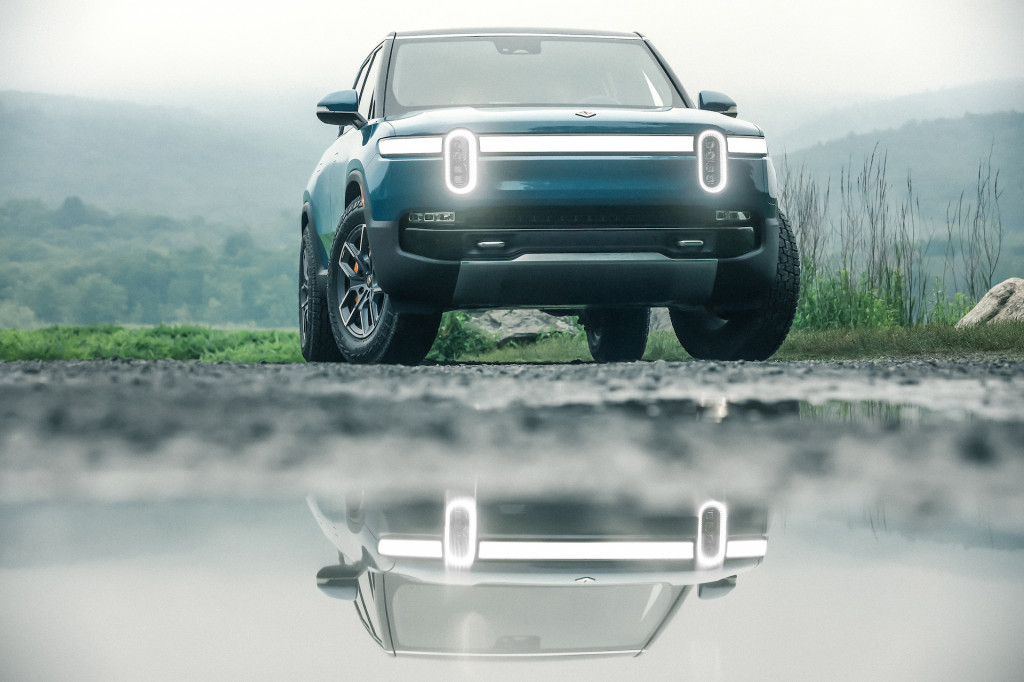
Rivian is putting charging stations at trailheads so owners can go on adventures.
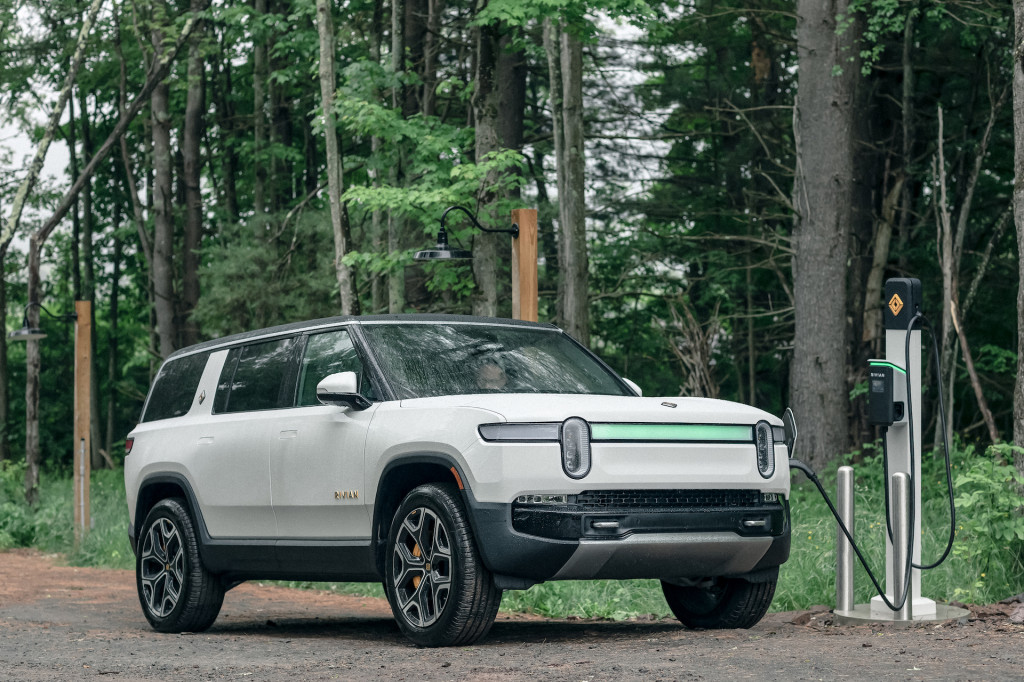
Rivian is putting charging stations at trailheads so owners can go on adventures.
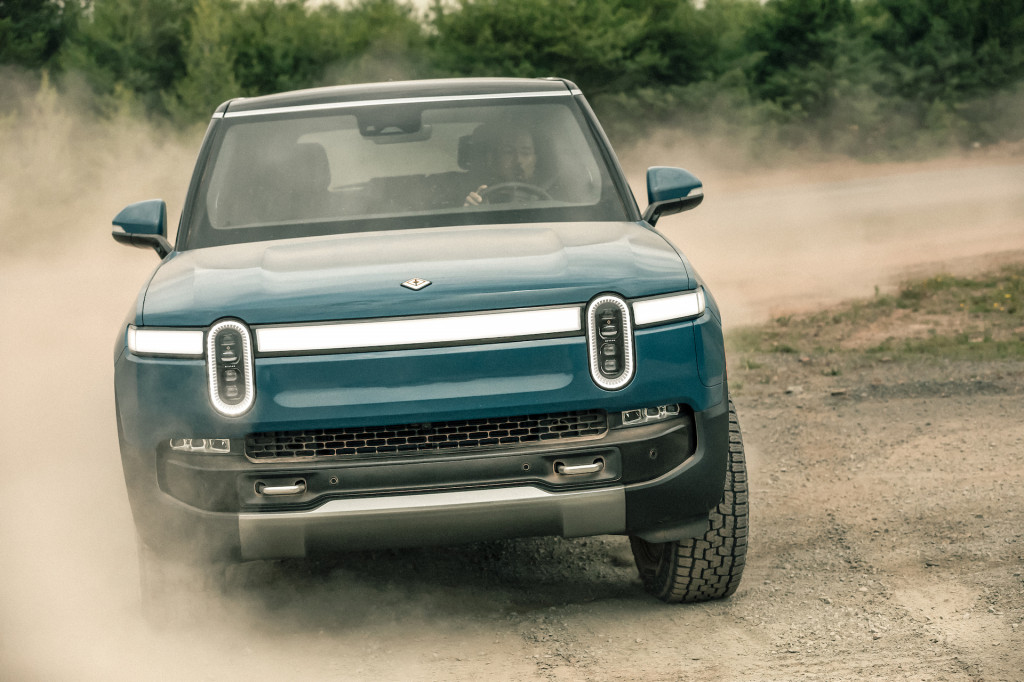
Rivian is putting charging stations at trailheads so owners can go on adventures.
R1S pricing and availability
The R1S strikes me as an electric combination of a Jeep Grand Cherokee and a Land Rover Range Rover. It’s priced accordingly, too. It’s offered in Explore and Adventure trims, and for now it’s only available with the Quad-Motor AWD powertrain and the Large Pack battery. A sizable price increase of $6,000-$12,000 before it even hit the market raised the starting price to $85,575 in Explore trim and $91,075 in Adventure trim when teamed with the Large Pack battery, which is the only battery choice for now. A Dual-Motor powertrain with about 600 hp will arrive in early 2024, and it will cut the starting price to $73,575 when teamed with the Standard Pack, which will account for $6,000 of those savings. For now, however, Rivian hasn’t announced a release date for the Standard Pack.
Rivian says any R1S ordered now will be delivered in late 2023, so buyers should be able to pick from most of the future available options for current orders. No matter what version you choose, you’ll get an electric vehicle with an adventurous spirit, good space, smart features, and immense electric power—all with the peace of mind of emissions-free driving.
Rivian provided airfare and lodging for Motor Authority to bring you this firsthand report.
[ad_2]